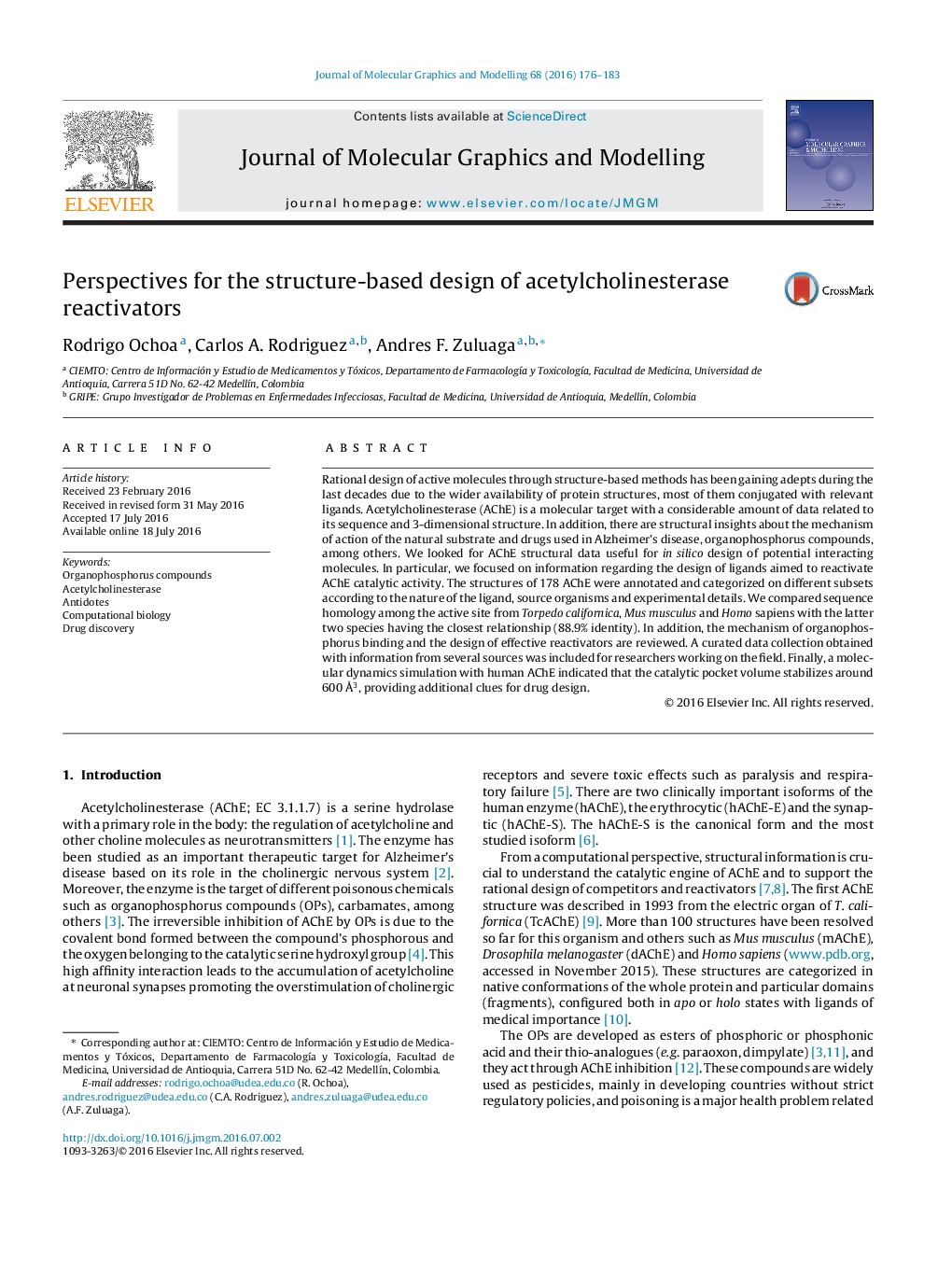| Article ID | Journal | Published Year | Pages | File Type |
|---|---|---|---|---|
| 443230 | Journal of Molecular Graphics and Modelling | 2016 | 8 Pages |
•There are 178 crystallized structures of AChE available in the literature.•Only 16 co-crystallized structures include organophosphorus compounds-AChE conjugates in mice and humans.•The sequence identity between murine and human AChE is 88.9%.•Smaller and strong nucleophiles are recommended for designing alternatives to oxime-based drugs.•Protein dynamics suggests the catalytic pocket’s volume stabilizes around 600 Å3.
Rational design of active molecules through structure-based methods has been gaining adepts during the last decades due to the wider availability of protein structures, most of them conjugated with relevant ligands. Acetylcholinesterase (AChE) is a molecular target with a considerable amount of data related to its sequence and 3-dimensional structure. In addition, there are structural insights about the mechanism of action of the natural substrate and drugs used in Alzheimer’s disease, organophosphorus compounds, among others. We looked for AChE structural data useful for in silico design of potential interacting molecules. In particular, we focused on information regarding the design of ligands aimed to reactivate AChE catalytic activity. The structures of 178 AChE were annotated and categorized on different subsets according to the nature of the ligand, source organisms and experimental details. We compared sequence homology among the active site from Torpedo californica, Mus musculus and Homo sapiens with the latter two species having the closest relationship (88.9% identity). In addition, the mechanism of organophosphorus binding and the design of effective reactivators are reviewed. A curated data collection obtained with information from several sources was included for researchers working on the field. Finally, a molecular dynamics simulation with human AChE indicated that the catalytic pocket volume stabilizes around 600 Å3, providing additional clues for drug design.
Graphical abstractMolecular characterization of the human acetylcholinesterase (AChE) active site. Each color represents a key subsite for the interaction with substrates or different type of ligands.Figure optionsDownload full-size imageDownload high-quality image (154 K)Download as PowerPoint slide
